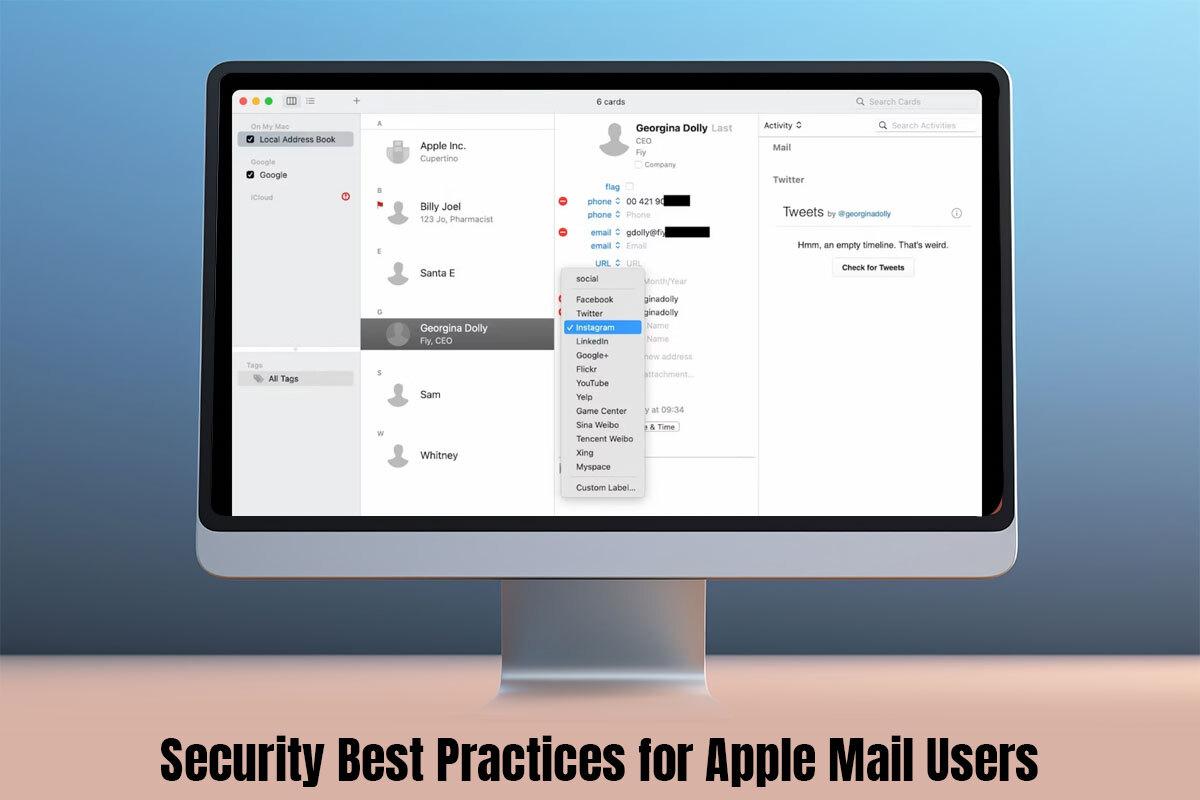Apple Mail is a popular email client, offering robust features and an intuitive interface. However, like any software, it is susceptible to security threats.
If Apple Mail is your default email app and you use it to send and receive both personal and professional emails, it is essential to take steps to enhance the security of your Apple Mail account. You wouldn’t want your sensitive information falling into the wrong hands!
Be on top of your Password Game
When you first sign into Apple Mail, you will be prompted to create a password for your account. Avoid using easily guessable passwords like pet names, birthdays, or common phrases. Instead, create strong and unique passwords combining uppercase and lowercase letters, symbols, and numbers.
Also, don’t use the same password for your Apple Mail account as one of your other accounts. It is always best to create a different password for each of your online accounts.
Yes, we understand that remembering difficult passwords for each of your online accounts is no mean feat. Instead of writing the passwords on a piece of paper that you might lose, consider using a password manager. Password managers securely store and manage passwords. They also help generate strong passwords.
Enable 2FA
Turn on 2FA (two-factor authentication) for your Apple ID to add an extra layer of security. With this feature turned on, logging into your Apple Mail will require a verification code sent to your phone number or another trusted device.
Check for Malware

If you have accidentally downloaded a malicious program or file to your device, it may wreak havoc. For example, Apple Mail quit unexpectedly is a sign your device has malware. This might cause you to lose the long email you have typed. Additionally, your sensitive information might be at risk.
You can use CleanMyMac X or other antivirus software of your choice to run a malware scan. If malware threats are found, get rid of them.
Utilize Email Filters and Spam Blocking
Create custom filters to sort and organize your emails so you can identify and block spam messages or potential phishing messages.
You can even utilize Apple Mail’s built-in spam filtering and blocking feature. Review the spam folder regularly and block potential scams or phishing messages. You can even report them so Apple can make the necessary adjustments.
Use Mail Privacy Protection

The Apple Mail Privacy Protection feature was launched on September 20, 2021. However, not many are still leveraging this feature to protect their mail activity.
Mail Privacy Protection is an option located in the Apple device setting of macOS 12 Monterey onwards and iOS 15 onwards. If you did not turn on this feature when you first opened Mail, you can enable it by going to Mail Settings.
Open the Mail app on your device > Settings > Privacy > choose Protect Mail Activity.
When this option is selected, your IP address is hidden from senders and remote content is privately downloaded in the background when you receive a message.
Secure Connections
Securing your connections is also critical if you are sending or viewing confidential emails.
Whenever you are accessing your Apple Mail account, ensure you are using a secure connection (HTTPS). Look for the padlock icon in the address bar of your browser.
Also, you must avoid using public Wi-Fi networks for confidential tasks, such as checking your emails. If you must use public Wi-Fi, consider using a VPN to encrypt your traffic.
Regular Updates
Remember, you must regularly update your Apple Mail, macOS and all other relevant software to ensure your information is protected. Updates usually include security patches that address vulnerabilities and performance enhancements.
Beware of social engineering attacks

Besides making software modifications and turning on spam filters, you also have to make efforts from your end to not give away your information voluntarily. One way to do this is by being aware of social engineering attacks and their impact.
Social engineering uses psychological manipulation to trick users into giving away confidential information or making security mistakes. You must always be cautious of emails requesting urgent action, such as providing personal information, transferring funds, etc. Legitimate organizations usually do not use such tactics.
Also, you must always verify the information. If you receive a suspicious or unexpected email, contact the organization directly using a verified email address or phone number to confirm the request.
Limit access to your account
Giving access to too many people is another mistake that most people are guilty of. Avoid sharing your Apple ID with others, including your family members. This prevents unauthorized access to your email account.
Are you using multiple Apple Mail accounts? If so, make sure they are all regularly updated and secure.
Conclusion
Reduce the risk of your Apple Mail account being compromised by following these security best practices. Also, be vigilant and aware of the latest security threats.

